Solar eclipse of June 21, 2020
| Solar eclipse of June 21, 2020 | |
|---|---|
 Map | |
| Type of eclipse | |
| Nature | Annular |
| Gamma | 0.1209 |
| Magnitude | 0.994 |
| Maximum eclipse | |
| Duration | 38 sec (0 m 38 s) |
| Coordinates | 30°30′N 79°42′E / 30.5°N 79.7°E |
| Max. width of band | 21 km (13 mi) |
| Times (UTC) | |
| Greatest eclipse | 6:41:15 |
| References | |
| Saros | 137 (36 of 70) |
| Catalog # (SE5000) | 9553 |
An annular solar eclipse will occur on June 21, 2020. A solar eclipse occurs when the Moon passes between Earth and the Sun, thereby totally or partly obscuring the image of the Sun for a viewer on Earth. An annular solar eclipse occurs when the Moon's apparent diameter is smaller than the Sun's, blocking most of the Sun's light and causing the Sun to look like an annulus (ring). An annular eclipse appears as a partial eclipse over a region of the Earth thousands of kilometres wide. The most obsurcied area is situated near Joshimath, Auli and Chamoli in the Himalayan state of Uttarakhand in India.
Images

Animated path
Related eclipses
Solar eclipses of 2018-2021
Each member in a semester series of solar eclipses repeats approximately every 177 days and 4 hours (a semester) at alternating nodes of the Moon's orbit.
Note: Partial solar eclipses on February 15, 2018, and August 11, 2018, occur during the previous semester series.
| Solar eclipse series sets from 2018–2021 | |||||
|---|---|---|---|---|---|
| Ascending node | Descending node | ||||
| 117 | July 13, 2018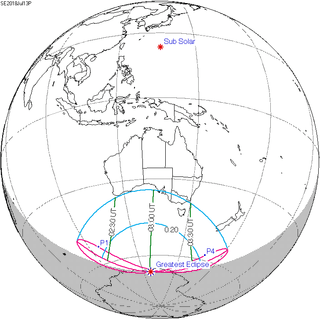 Partial |
122 | January 6, 2019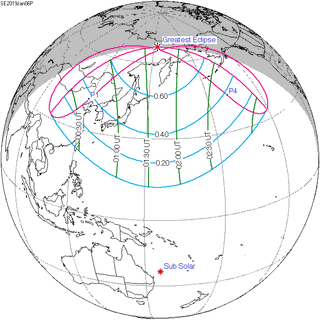 Partial | ||
| 127 | July 2, 2019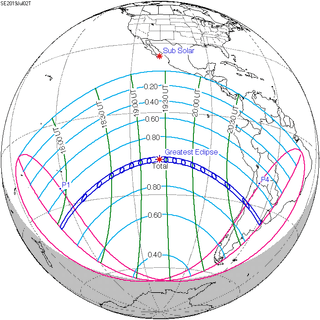 Total |
132 | December 26, 2019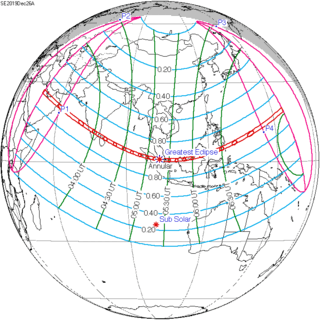 Annular | ||
| 137 | June 21, 2020 Annular |
142 | December 14, 2020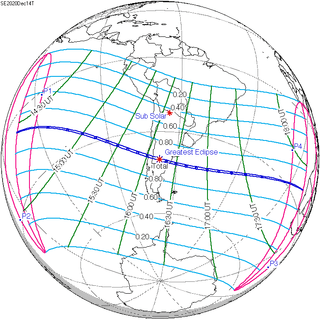 Total | ||
| 147 | June 10, 2021 Annular |
152 | December 4, 2021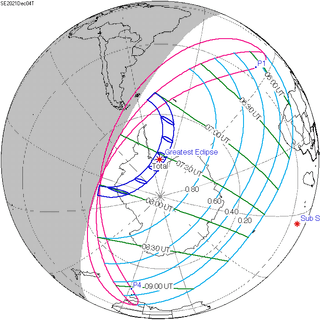 Total | ||
Inex series
This eclipse is a part of the long period inex cycle, repeating at alternating nodes, every 358 synodic months (≈ 10,571.95 days, or 29 years minus 20 days). Their appearance and longitude are irregular due to a lack of synchronization with the anomalistic month (period of perigee). However, groupings of 3 inex cycles (≈ 87 years minus 2 months) comes close (≈ 1,151.02 anomalistic months), so eclipses are similar in these groupings.
| Inex series members between 1901 and 2100: | ||
|---|---|---|
 September 9, 1904 (Saros 133) |
 August 21, 1933 (Saros 134) |
 July 31, 1962 (Saros 135) |
 July 11, 1991 (Saros 136) |
 June 21, 2020 (Saros 137) |
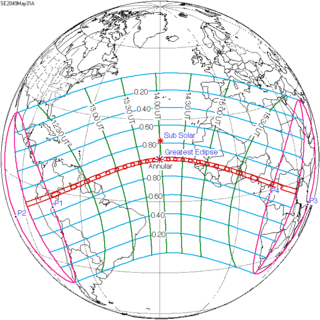 May 31, 2049 (Saros 138) |
 May 11, 2078 (Saros 139) |
||
Metonic series
The metonic series repeats eclipses every 19 years (6939.69 days), lasting about 5 cycles. Eclipses occur in nearly the same calendar date. In addition the octon subseries repeats 1/5 of that or every 3.8 years (1387.94 days).
| 21 eclipse events between June 21, 1982, and June 21, 2058 | ||||
|---|---|---|---|---|
| June 21 | April 8-9 | January 26 | November 13-14 | September 1-2 |
| 117 | 119 | 121 | 123 | 125 |
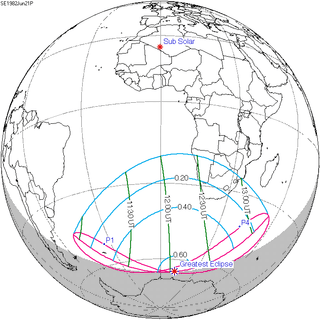 June 21, 1982 |
 April 9, 1986 |
 January 26, 1990 |
 November 13, 1993 |
 September 2, 1997 |
| 127 | 129 | 131 | 133 | 135 |
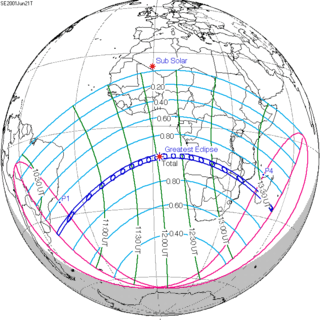 June 21, 2001 |
 April 8, 2005 |
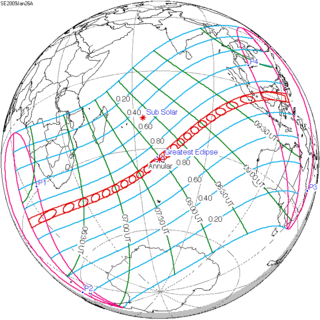 January 26, 2009 |
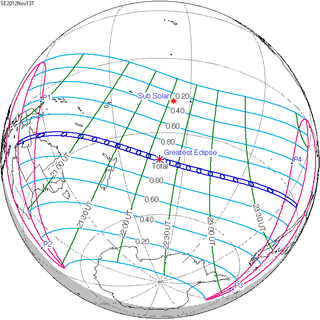 November 13, 2012 |
 September 1, 2016 |
| 137 | 139 | 141 | 143 | 145 |
 June 21, 2020 |
 April 8, 2024 |
 January 26, 2028 |
 November 14, 2031 |
 September 2, 2035 |
| 147 | 149 | 151 | 153 | 155 |
 June 21, 2039 |
 April 9, 2043 |
 January 26, 2047 |
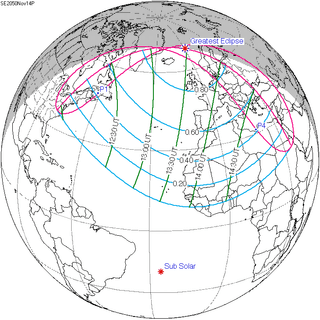 November 14, 2050 |
 September 2, 2054 |
| 157 | ||||
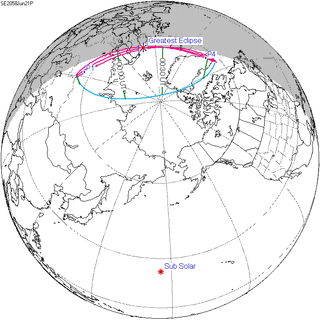 June 21, 2058 | ||||
Notes
References
- Earth visibility chart and eclipse statistics Eclipse Predictions by Fred Espenak, NASA/GSFC
| Wikimedia Commons has media related to Solar eclipse of 2020 June 21. |
